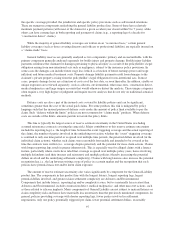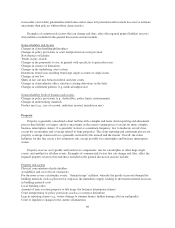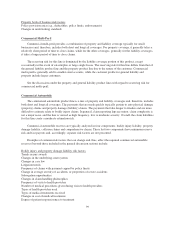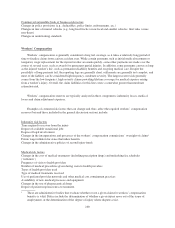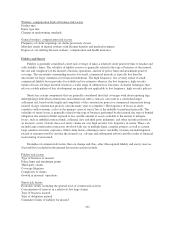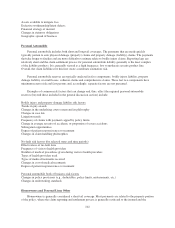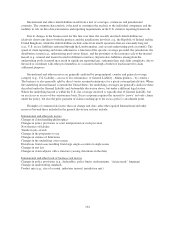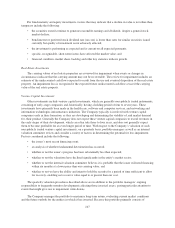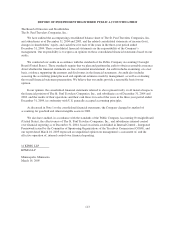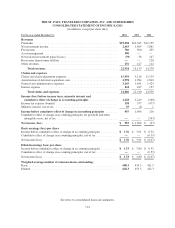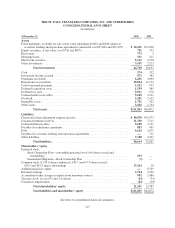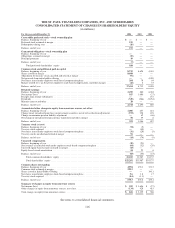Travelers 2004 Annual Report Download - page 119
Download and view the complete annual report
Please find page 119 of the 2004 Travelers annual report below. You can navigate through the pages in the report by either clicking on the pages listed below, or by using the keyword search tool below to find specific information within the annual report.For fixed maturity and equity investments, factors that may indicate that a decline in value is not other-than-
temporary include the following:
• the securities owned continue to generate reasonable earnings and dividends, despite a general stock
market decline;
• bond interest or preferred stock dividend rate (on cost) is lower than rates for similar securities issued
currently but quality of investment is not adversely affected;
• the investment is performing as expected and is current on all expected payments;
• specific, recognizable, short-term factors have affected the market value; and
• financial condition, market share, backlog and other key statistics indicate growth.
Real Estate Investments
The carrying values of real estate properties are reviewed for impairment when events or changes in
circumstances indicate that the carrying amount may not be recoverable. The review for impairment includes an
estimate of the undiscounted cash flows expected to result from the use and eventual disposition of the real estate
property. An impairment loss is recognized if the expected future undiscounted cash flows exceed the carrying
value of the real estate property.
Venture Capital Investments
Other investments include venture capital investments, which are generally non-publicly traded instruments,
consisting of early-stage companies and, historically, having a holding period of four to seven years. These
investments have primarily been made in the health care, software and computer services, and networking and
information technologies infrastructures industries. The Company typically is involved with venture capital
companies early in their formation, as they are developing and determining the viability of, and market demand
for, their product. Generally the Company does not expect these venture capital companies to record revenues in
the early stages of their development, which can often take three to four years, and does not generally expect
them to become profitable for an even longer period of time. With respect to the Company’s valuation of such
non-publicly traded venture capital investments, on a quarterly basis, portfolio managers as well as an internal
valuation committee review and consider a variety of factors in determining the potential for loss impairment.
Factors considered include the following:
• the issuer’s most recent financing event;
• an analysis of whether fundamental deterioration has occurred;
• whether or not the issuer’s progress has been substantially less than expected;
• whether or not the valuations have declined significantly in the entity’s market sector;
• whether or not the internal valuation committee believes it is probable that the issuer will need financing
within six months at a lower price than our carrying value; and
• whether or not we have the ability and intent to hold the security for a period of time sufficient to allow
for recovery, enabling us to receive value equal to or greater than our cost.
The quarterly valuation procedures described above are in addition to the portfolio managers’ ongoing
responsibility to frequently monitor developments affecting those invested assets, paying particular attention to
events that might give rise to impairment write-downs.
The Company manages the portfolio to maximize long-term return, evaluating current market conditions
and the future outlook for the entities in which it has invested. Because this portfolio primarily consists of
107


